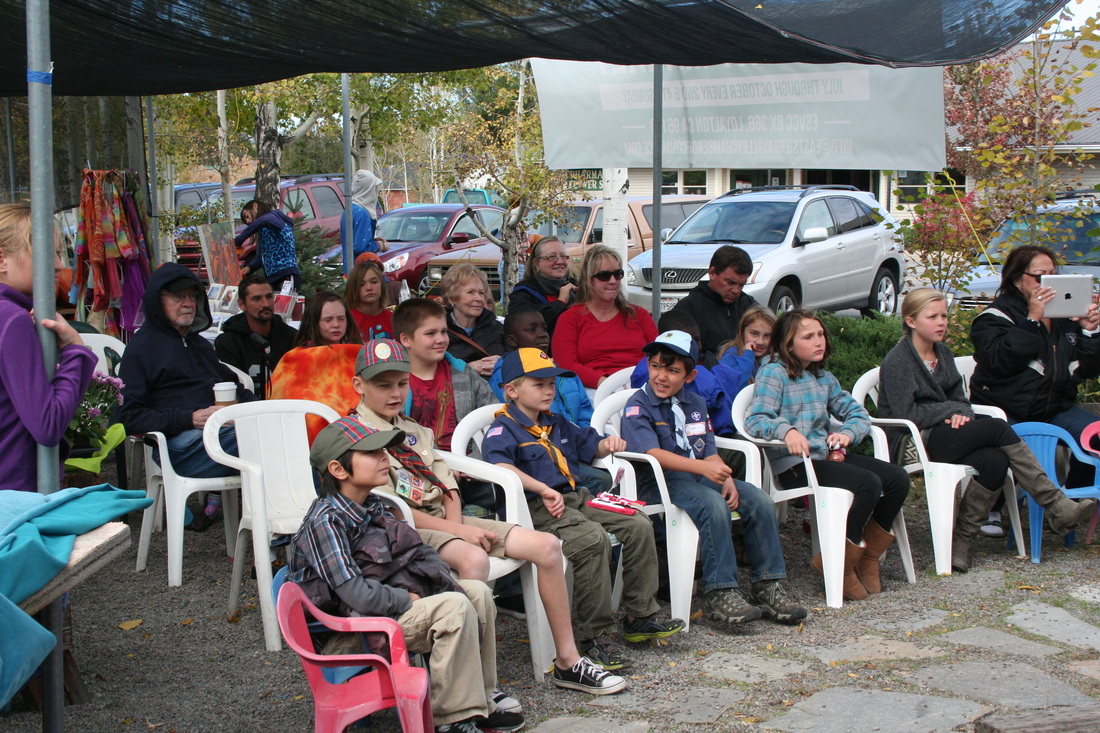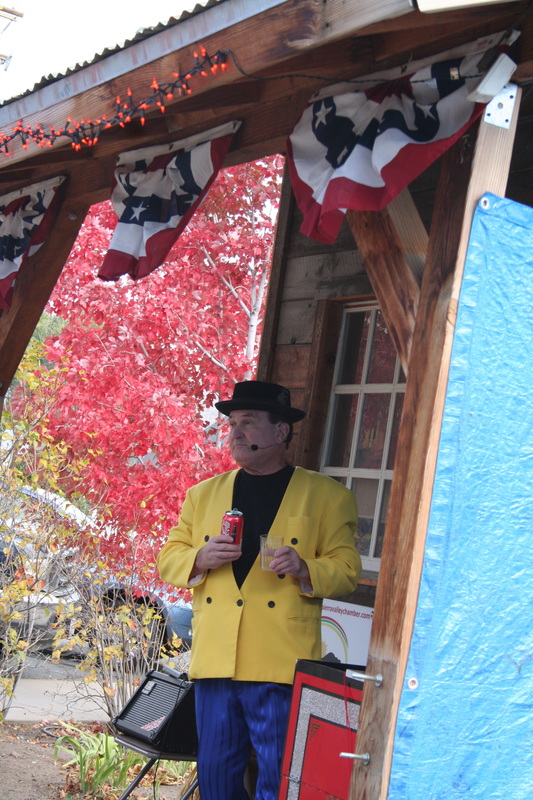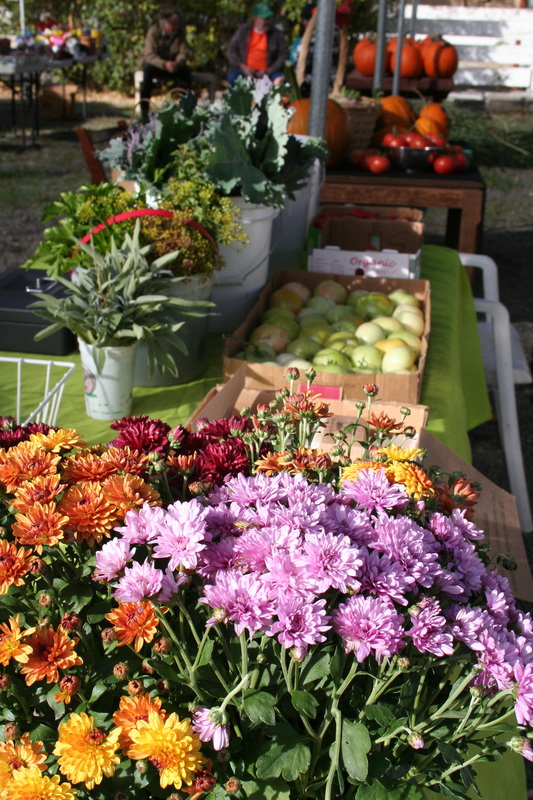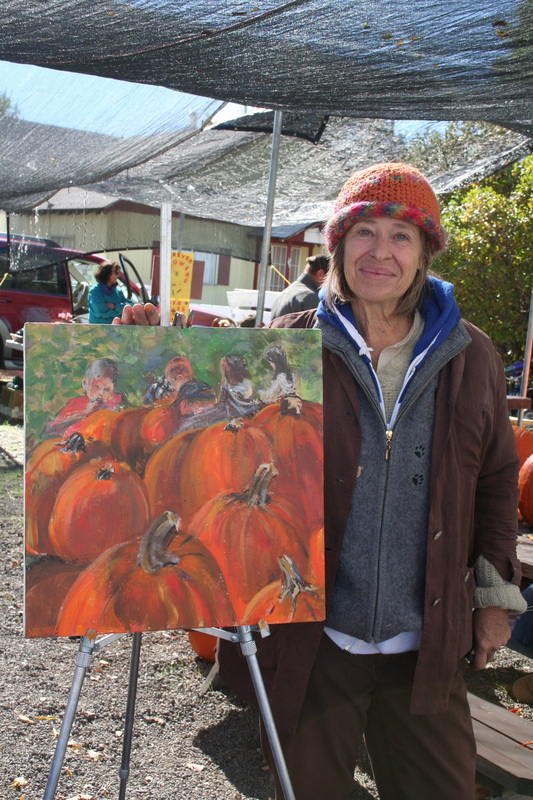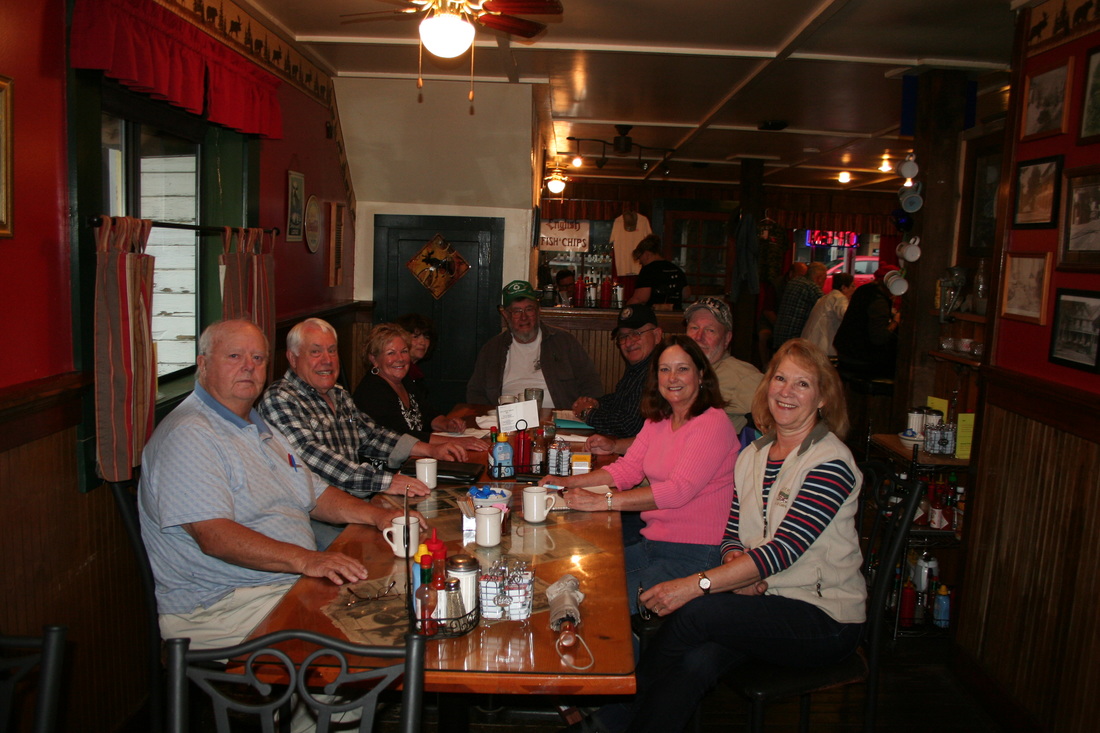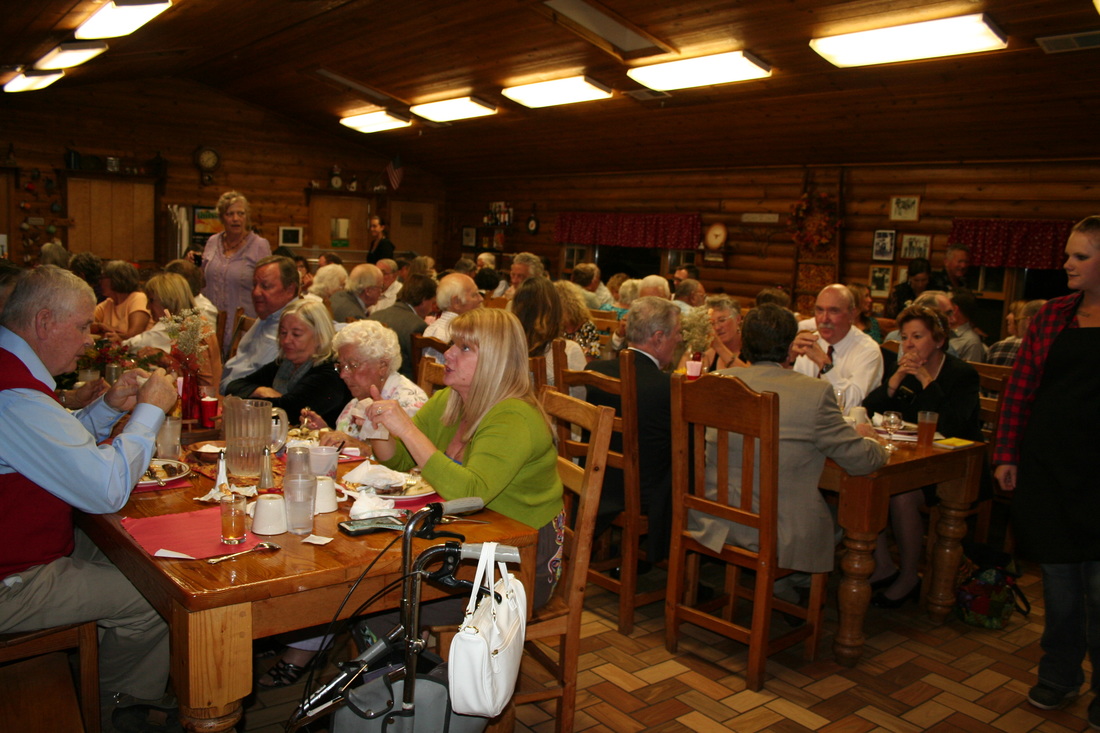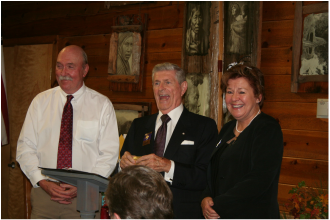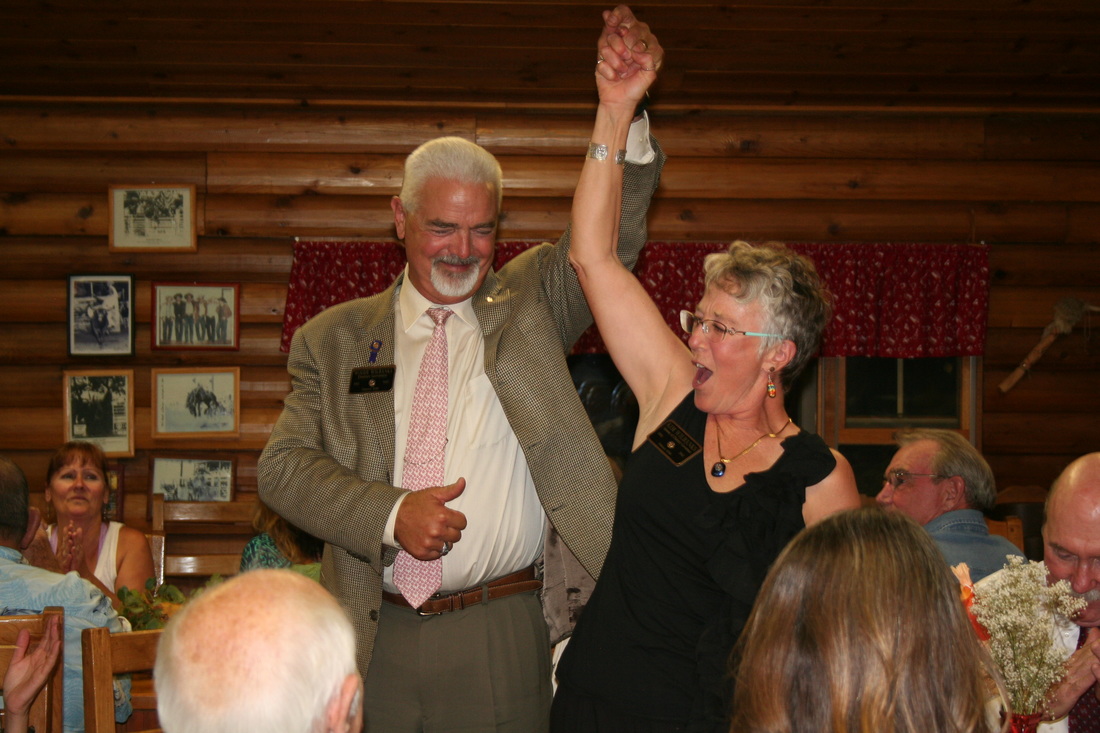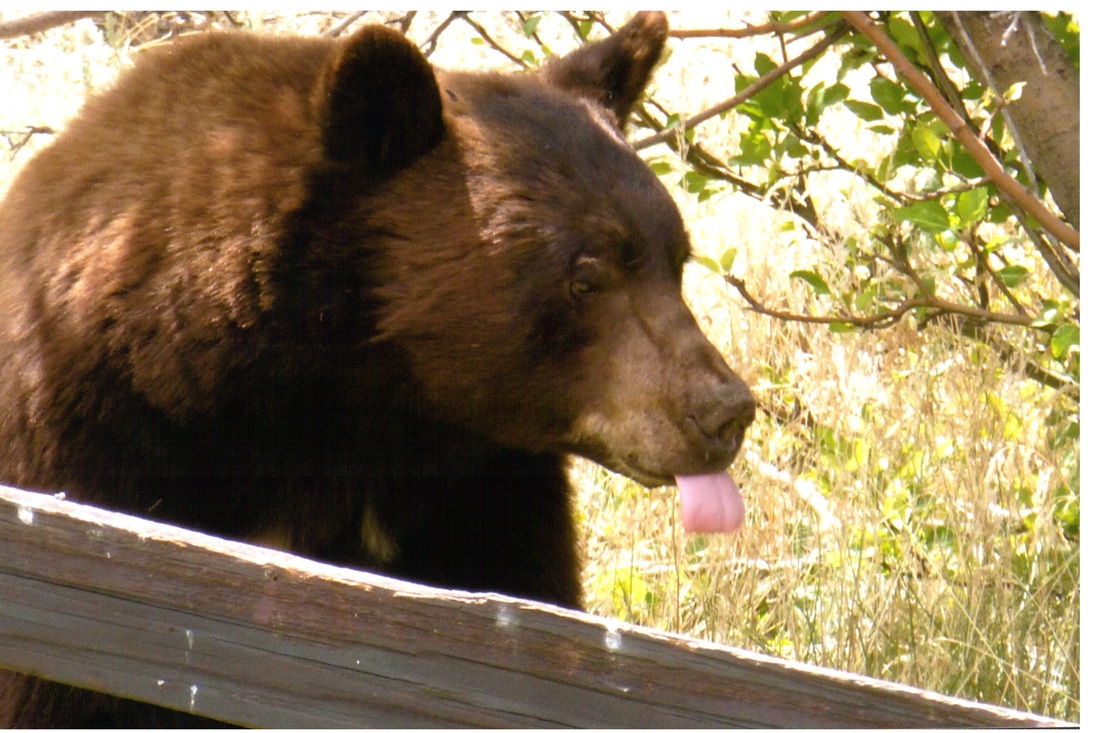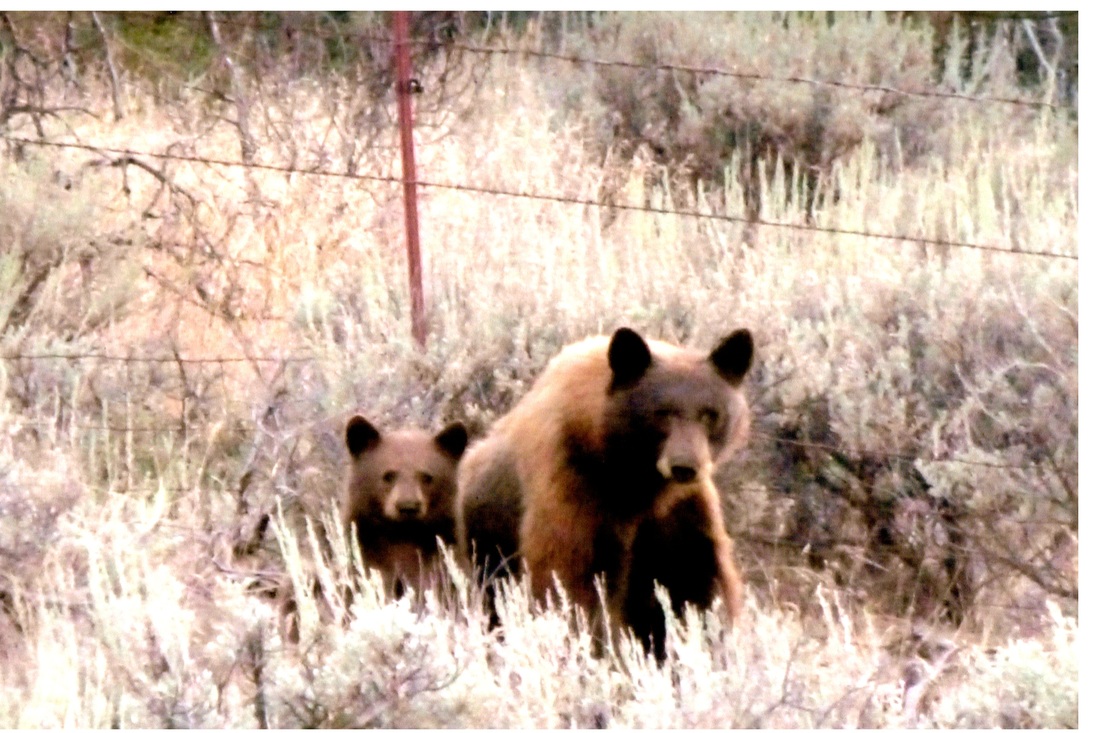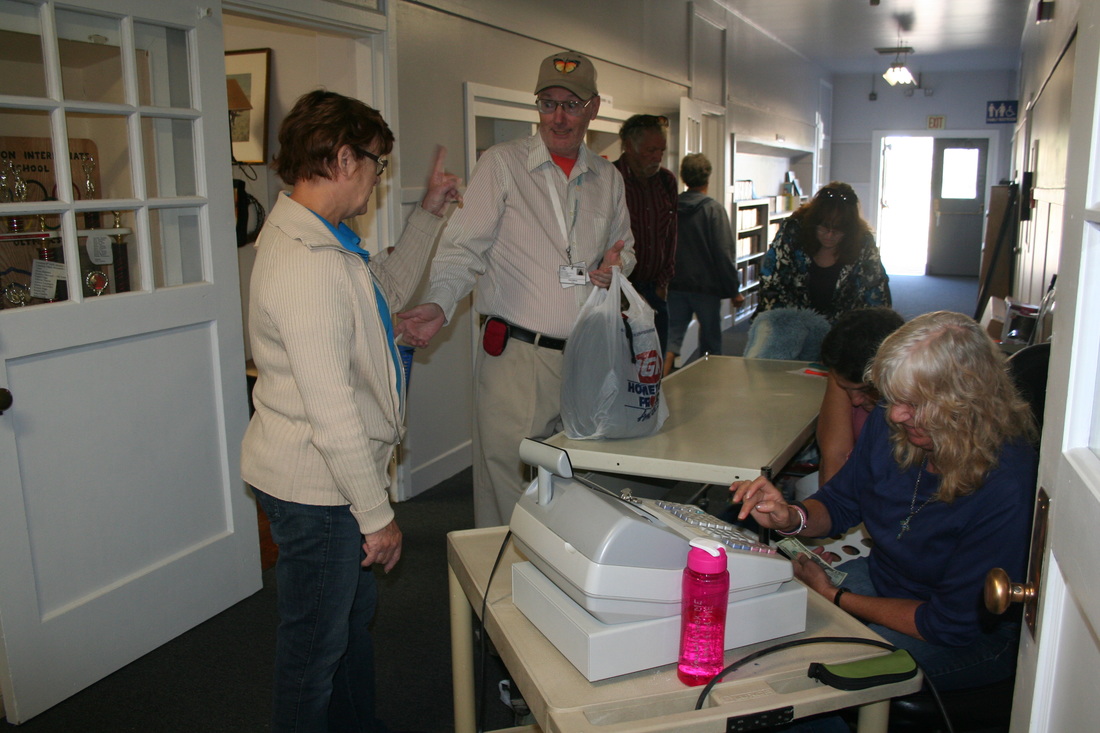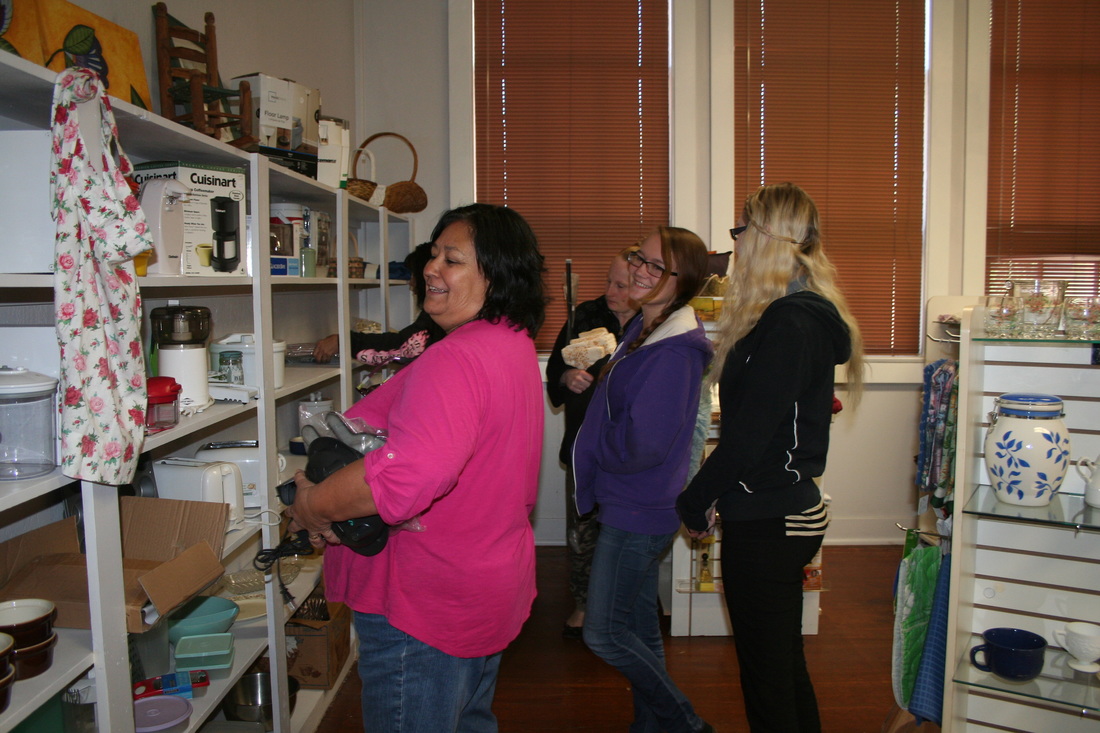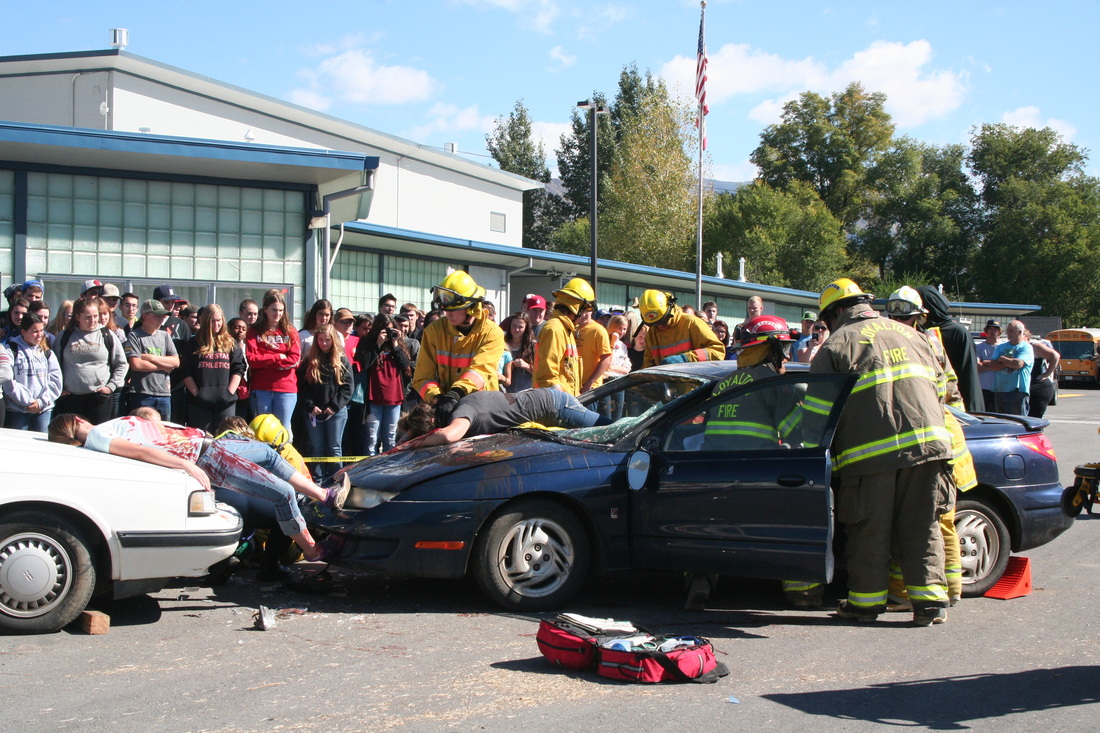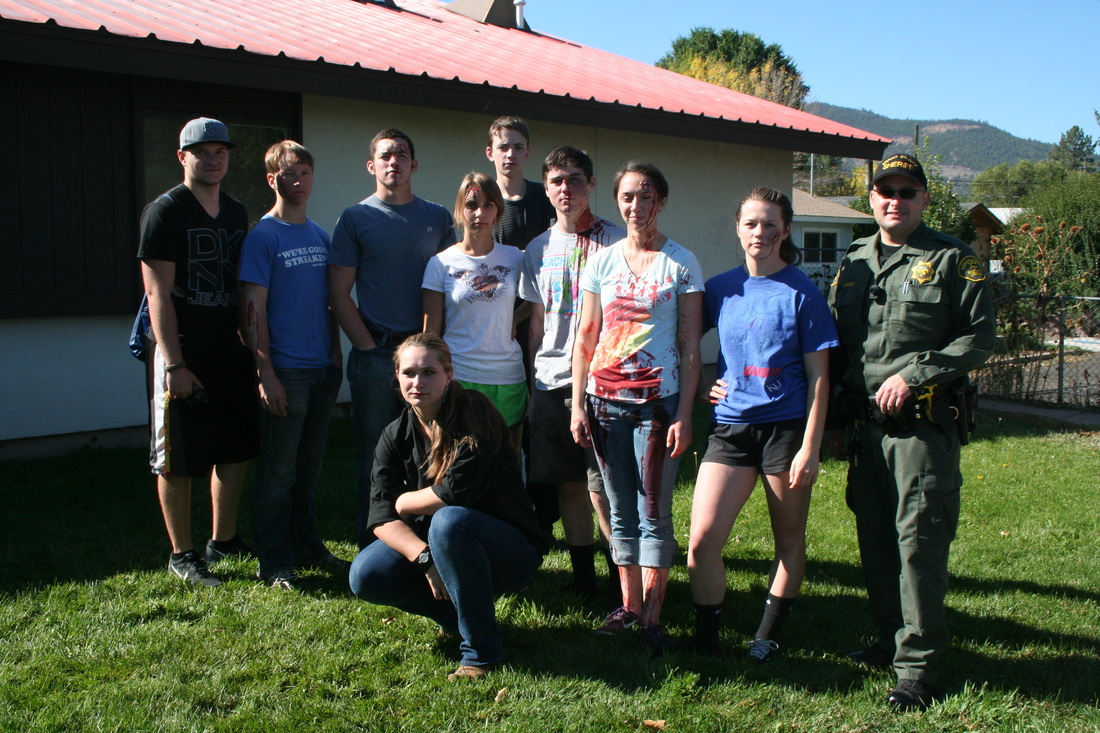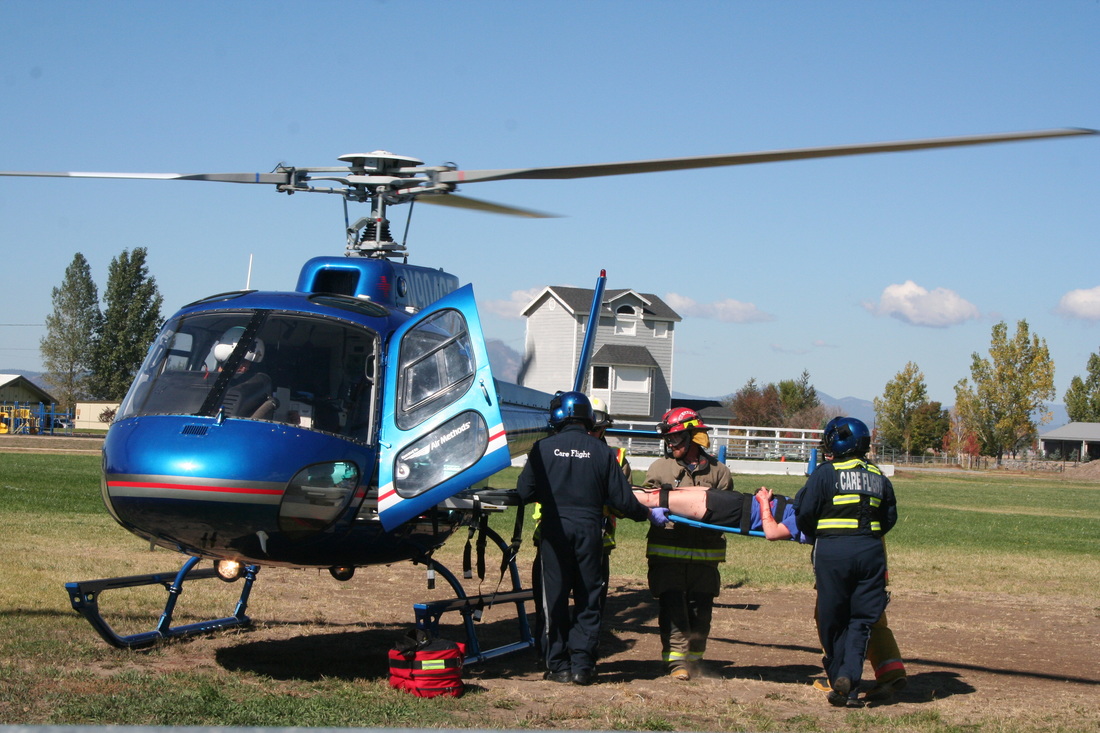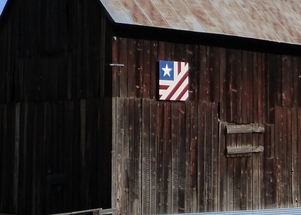|
By the Outdoor Power Equipment Institute Autumn may be here, but your lawn still requires care. The drought in the West has taken a serious toll on lawns throughout the region and they are showing signs of stress. Here are a few tips to help you keep your yard in top form and delivering these health benefits for you and your community: Tip #1: Let your grass go brown. Grass grows in cycles, “turning on and off,” based on the resources it gets. As water becomes less available, grass will slow down, go dormant and turn brown. Tip #2: Don’t Over Water. It may be tempting to give your thirsty lawn a heavy duty drink, but stick with what the experts recommend. Make your grass work hard for its water. Grass gets lazy if you water it too much and sends its roots horizontally. With little water, grass will send its roots deeper, vertically, seeking water. Having to work harder, makes grass do a better job of sequestering carbon and releasing oxygen. Tip #3: Plant the Right Grass. Fall can be a good time of year to transition to a more drought-friendly grass variety in your yard. Hundreds of varieties of turfgrass exist, and some of them are perfect for drought conditions. When established, these grasses require very little water and also will survive foot traffic, children’s play and pets. Tip #4: Add Pollinators. Your lawn is an ecosystem, and pollinators are a key part of its life cycle. Even in the desert, a host of plants flower. Add pollinator plants for bees, butterflies, and humming birds if you haven’t already. Tip #5: Mix Native Plants and Drought-Resistant Adaptive Species in Your Lawn. We no live longer in a native environment. We live in cities and suburbs where we must incorporate both native plants and drought-resistant adaptive plants to offset the concrete, asphalt, people and traffic. Tip #6: Educate yourself on the benefits of your landscape. Living landscapes provide you and your community with a host of benefits. Turfgrasses, like those found in your lawn, dissipate radiant heat through a process called evapotranspiration, helping to cool urban “heat islands.” Grass also improves air quality and sequesters carbon, reducing the amount of carbon dioxide that contributes to the greenhouse gas effect. Your lawn also produces oxygen. A turf area 50' x 50' will produce enough oxygen to meet the daily needs of a family of four. Grass also captures and filters water run-off and rainfall too, removing harmful pollutants. With a little care, your yard can continue providing these benefits for you and your community. While many people feel pressured to rip out their lawns and deaden their landscapes with mulch, gravel and plastic grass, the reality is that a living lawn offers a host of benefits. Even in a drought you can have grass and other living plants; you just have to choose the right kind of lawn and care for it properly. DOWNIEVILLE, Calif. – The Yuba River Ranger District recently completed thinning and hand-piling of forest fuels for the Red Ant Thinning and Fuels Reduction Project. The 550-acre project, which will help prevent wildfires in the Downieville/Goodyears Bar area, now moves into the next phase involving prescribed burns. The purpose of the Project is to enhance forest and watershed health and wildlife habitat, as well as reduce the risk of extreme fire behavior within and adjacent to the wildland urban intermix zones (WUIs). Started in 2007, the Project began with timber harvesting—4.9 million board feet of timber was removed. More recently, crews hand-cut and hand-piled vegetation to reduce “ladder fuels,” which allow fire to move from the ground up into the tree canopy. The next phase of the Project involves prescribed burns, including understory burns and pile burning, in the units that have been harvested and thinned. This maintenance phase of the Project will limit the build-up of ground fuels to help reduce wildfire risk in the area. Prescribed burning operations will begin as soon as conditions permit. “Understory and pile burning activities are a critical part of this project. Our first priority is public and firefighter safety, so these operations will only take place when air temperature, relative humidity, wind speed and direction, and fuel moisture are appropriate,” said District Ranger Karen Hayden. “The Red Ant Thinning and Fuels Reduction Project is one of the ways we’re reducing the threat of wildfires to Downieville and other communities within the Tahoe National Forest.” Forest Service fire managers work closely with air quality management districts to minimize smoke impacts to communities during prescribed burn operations. For more information on the Project, please contact Mark Longshore at (530) 288-3231. For more Tahoe National Forest information, go to www.fs.usda.gov/tahoe. Follow us on Twitter at twitter.com/Tahoe_NF and “Like” us on Facebook at www.facebook.com/TahoeNF. Sierra Valley Lodge is happy to welcome local resident Dwight Brooks as our partner and General Manager of The Lodge effective immediately. Mr. Brooks will also oversee the transformation of the Lodge’s restaurant into a more locallydriven, familyfriendly BBQ centric menu. Dwight Brooks is no stranger to the Sierra Valley where he has been a residence since 1999 after moving to the area with his wife, Heidi where they raise their two boys. After honing his culinary skills in his Sierraville cafe for the past several years, Dwight plans to take his growing love of smoking and bbq ing ribs, turkeys and brisket to a whole new level at Sierra Valley Lodge. The new hours for the lodge will be Thursday through Sunday from 11am til 11pm. Menu items to include a la carte BBQ plates, sandwiches and pasta. Look for the restaurant to feature daily specials, lower prices, a bigger selection available in the bar and on Sundays, the emphasis will be on families with kids under 10 eating free! Dwight is also a musician and his love of music will dovetail well with the Lodge’s musical offerings which include a great Halloween show this Sat as well as a very special New Year ve show with the Dead Winter Carpenters! The lodge was originally built in 1919 as a recreation hall for the oncethriving mill town owned by DaviesJohnson Lumber Company. Although the town and the hall have changed over the years, the enjoyment the town and the county have derived from the space made it an important part of the community as they watched bands, graduations, weddings, and cowboy poetry readings over the year. There are now rooms available for the lodge which will be open all winter long as well as the bar and the restaurant. So come on down to Calpine! Sierra Valley Lodge is located at 103 Main St, Calpine CA. This charming venue boasts a state of the art digital sound system, a restaurant and a great local western themed bar. The Parish Entertainment Group is owned by Michael O’Connor and Jason Perkins who operate The New Parish, The Rock Steady, The Speaker Box Cafe and Leo’s in Oakland, plus Brick & Mortar, Place Pigalle, BIg Rec and Crafty Fox in San Francisco. Their latest installment is Sierra Valley Lodge a mountain music venue (sierravalleylodge.net). -Additional meeting added in Sierra City- QUINCY, Calif. – October 28, 2015 – Plumas National Forest officials have added an additional meeting in support of the over-snow vehicle (OSV) designation effort currently underway for roads, trails and areas within the Plumas National Forest. The meeting will be held on November 5 in Sierra City, CA at the Sierra City Community Hall (14 Castagna Alley (off Hwy 89)) from 6:00 – 8:00 pm. This is the fifth of 5 meetings with a focus on the initial step of the environmental planning effort, called the “Proposed Action.” People interested in the project have until November 13 to provide feedback during this phase of planning called project “scoping.” Following the scoping phase, an interdisciplinary team will be reviewing information about the project; including feedback received from the community and will develop new alternatives as needed. After analyzing the impacts of the proposed action and other alternatives and then packaging the information into a draft environmental impact statement, a second public comment phase will be conducted in the spring of 2017. Comments received at that time will be considered in the development of the Final Environmental Impact Statement. A decision on the project will be made following the completion of a final EIS in fall of 2017. More information, including the proposed action and opportunities for comment, is available at: http://www.fs.usda.gov/project/?project=47124 or by calling the Plumas National Forest at (530) 283-2050. LOYALTON CITY COUNCIL met Tuesday night. Mayor Pat Whitley reported out of closed session they’d hired Colby Russell as a public works employee. Councilman John Cussins was absent.
Annie Fassbender addressed the council in public comment over having to cancel the firemen’s fundraiser over the stove at the new City Center. Pat said it wasn’t a commercial kitchen. Annie said she’d gone to the health dept. and that the city’s building inspector said she could have three fundraisers in three months. This will be on next month’s agenda. Under fire department news with Chief Shawn Heywood, there is a new hire. He complained about communication between Sierra Brooks and Loyalton and will check on using the Babbitt repeater for mutual aid. Resolutions were approved; one was accessing Federal Excess Personal Property and one for response away from one’s official duty station and being paid portal to portal. The mayor reported a “blip” with two missing checks which have had stopped payment. Finance Director Kim Lombardi said the checks were not generated off the software system and it’s been reported as theft. The mayor warned on the budget and to be checking into what is being spent. On the wastewater treatment plant litigation, Councilman Brooks Mitchell reported the Courts had accepted amending the motion for fraud. With the discussion of rental agreement for the City Center Auditorium, the issue of the stove was again raised. Kim felt it was no different than what was done at the social hall with the museum right next door to the kitchen. Curator Jackie Mitchell suggested using the “fabulous” new kitchen at the senior center and suggested progressive dinners from there to the auditorium. It was lengthy discussion and Phyllis felt a lot of money was wasted for not using the kitchen. Brooks will check with the insurance carrier about cooking with artifacts. Pat will follow up with the city’s building inspector. Jackie said she wouldn’t object if there were proper venting. The fees for rent now are: Social Hall $65 per day plus $100 refundable cleaning deposit; Loyalton Pavilion, $65 per 50/100 people refundable cleaning deposit only; City Center Auditorium, $30 plus $100 refundable cleaning deposit. Jackie Mitchell detailed the City Center yard on the west side, and stated Wayne White will donate time to move historic equipment and Travis Marsh will use city equipment to scrape off the grass and prepare for gravel of which Joy Engineering donated two loads. She said she had $1,000 remaining in the museum fund and she's called SPI about using metal beams for a shade wall to protect historic ranching and farm equipment with shade walls around the perimeter of the former yard. A special meeting was held Friday, Oct. 23rd regarding expenditures on the City Center. Washington, DC – This morning House Majority Leader Kevin McCarthy (CA-23) and every California Republican in the U.S. House of Representatives sent a letter to President Obama and Governor Brown on the state and federal governments’ plans to increase water capture during the upcoming winter months. In addition to hearing from Members of Congress, the Obama Administration and the Brown Administration received a similar letter from State Senate Republican Leader Jean Fuller and Republican members in California State Senate and Assembly. Below is the text of the congressional letter: October 22, 2015 The Honorable Barack Obama The Honorable Jerry Brown The White House Governor of California 1600 Pennsylvania Avenue, NW State Capitol, Suite 1173 Washington, D.C. 20500 Sacramento, California 95814 Dear Mr. President and Governor Brown: As California faces a persistent, catastrophic drought, we write today to request that you direct Federal and state agencies and departments to take all necessary steps to prepare to capture, store, and move water to northern, central, and southern California in the event El Nino-related precipitation materializes this winter. As you know, California is experiencing the driest years on record since 1895. This has resulted in communities we represent depleting their existing water supplies or simply running out of water altogether, as we have seen in some Central Valley regions. The extent of the drought has also resulted in unprecedented water rationing orders designed to stretch our already limited supplies into the future and first-of-their-kind groundwater regulations in our state. The National Oceanic and Atmospheric Administration (NOAA) predicts the current El Nino in the Pacific Ocean has a 95% chance of continuing through the 2015-2016 winter. NOAA goes on to state that current atmospheric conditions indicate this could be a strong El Nino, bringing heavy and much-need precipitation to our drought-parched state, in northern, central, and southern California. NOAA Climate Prediction Center (CPC) data shows there is a 66% chance that El Nino could bring normal to above normal precipitation this winter in northern California, where rain and snow feed critical reservoirs that supply water to the rest of our state. CPC data also shows upwards of a 93% chance of normal to above average precipitation for the rest of the state. This precipitation would likely peak in the first quarter of 2016. While El Nino-related precipitation will probably not end the drought we face, this much needed water would be a crucial lifeline to our struggling constituents. We believe that Federal and state environmental policies and regulations have exacerbated California’s current situation by denying us the ability to capture water for human use and consumption now and to better prepare ourselves for situations like the current drought. The House of Representatives has passed legislation to help provide more water to all Californians while maintaining protections for the environment. We remain committed to working with you and the Senate in a constructive manner to enact legislation to help our state. However, as the legislative process continues, we are interested in making sure that Federal and state agencies and departments are prepared to maximize the benefits of El Nino for California’s families, farms, businesses, and cities. To that end, we have the following questions: · Do Federal government agencies, such as the U.S. Bureau of Reclamation, the U.S. Fish and Wildlife Service, and the National Marine Fisheries Service, have plans in place to capture El Nino-related precipitation for human use? If so, what are these plans? · Do California government agencies, such as the Department of Water Resources, the California Fish and Wildlife Service, and the State Water Resources Control Board, have plans in place to capture El Nino-related precipitation for human use? If so, what are these plans? · If neither Federal nor state agencies have such plans in place, what is the timeline to develop and implement such plans? · In years past, we have seen various policy and regulatory impediments – including those associated with protecting fish – that limited water exports from the Sacramento-San Joaquin River Delta. How do Federal and state agencies intend to overcome these obstacles to maximize water exports to central and southern California? · What actions are Federal and state agencies taking or have already taken in advance of El Nino to capture water for human use? While it is important to prepare for potential mudslides and flooding, it also important to remember that our constituents desperately need the water they are entitled to or have contracted and paid for. El Nino could be a potential Godsend if precipitation materializes and we are able to capture it for human use. While no one can know for certain how much rain or snow could occur this winter, it is imperative that we are prepared to maximize the benefit to all Californians that El Nino could bring. We look forward to your response and working together to help our state through this difficult period. The University of California Cooperative Extension (UCCE) is working with local agricultural and community organizations, tourism professionals, and experienced agritourism operators to offer a three-session agritourism planning course for farmers and ranchers in Plumas-Sierra Counties and the surrounding region. Farmers and ranchers who are considering, starting or expanding agritourism or nature tourism businesses on their farms or ranches are invited to register for this low-cost, hands-on course. “Agricultural operations in the Lost Sierra offer a wealth of beautiful natural resources and unique experiences with local farmers and ranchers. With prices, competition and water situations the way they are all over California, it can be hard to make a living. Our workshops will give farmers and ranchers the contacts and tools to more successfully grow and market their individual agritourism enterprises adding to their income and helping spread the risk of tough production years. Working with others in the community, we hope to expand marketing options for the Lost Sierra Region,” said Holly George, Livestock & Natural Resource Advisor and County Director with UC Cooperative Extension, Plumas-Sierra. Participants will learn about the variety of potential businesses, including farm stands, U-Pick operations, event hosting, tours, festivals and outdoor recreation. Each participant will receive a free copy of the UC ANR published handbook, “Agritourism and Nature Tourism in California”, which will be used as the text for the class. Attendees will hear from experienced agritourism operators and experts in business planning, risk management, regulatory compliance and marketing. Class instructors will provide individual guidance and help participants form a supportive network as they plan and develop their own agritourism or nature tourism businesses. Registration is open. Space is limited, so please sign up early. Plumas County Agritourism Intensive: Dates: Tuesdays, Dec 1, 2015, Jan 12 & Feb 23, 2016 Times: 9:00 a.m. - 4:00 p.m. each session (lunch provided) Location: Mineral Building, Plumas County Fairgrounds, Quincy, CA 95971 Cost: $50 for 3-session course (only $20 for additional participants from same family or business) Registration: http://ucanr.edu/agtourplumas15 For more Information: Penny Leff, UCCE Agritourism Coordinator, [email protected], 530-752-7779 Holly George, UCCE Plumas/Sierra, [email protected], 530-283-6262 New Plastic Bag Ballot Measure Targets Greedy Grocers By Jon Fleischman For many years, the most extreme elements of the environmental movement pursued a statewide ban on plastic grocery bags in California. Every time they would do this, despite the overwhelming liberal majorities in the state legislature, their efforts would fail. Over and over the arguments on the junk-science behind defaming the bags, the negative economic impacts of a ban, and the impressive political coalition opposing the ban combined to kill the effort. Until last year, that is, when something happened. The California Grocers Association (CGA), which had been a key member of the coalition stopping the ban from passing for many years, threw its full weight behind SB 270, which added to the statewide ban on standard plastic grocery bags a ten-cent "fee" (read: TAX) on each paper bag and thicker plastic bag provided to customers. The profits from those fees will go to-you guessed it-the grocers. To put it bluntly, the greed of the grocers could not resist the idea of a windfall that would see them gaining brand new tax-free profits that could approach a half-billion dollars annually. The legislation, backed by the CGA, passed out of the legislature and was signed by Governor Jerry Brown. However, the American Progressive Bag Alliance immediately set about the task of collecting over 800,000 signatures to refer SB 270 to the voters. The State Constitution provides that if enough voters sign petitions, they can halt a newly-enacted law, and then that law has to appear before voters on the next general election ballot. If voters approve it, the law goes into effect. If they reject it, the law is repealed. SB 270, the statewide plastic bag ban combined with the ten-cent per paper/thicker plastic bag tax, will be up before voters next November. No doubt grocers have been salivating over the opportunity to reap hundreds of millions of dollars of profits from their unholy alliance with extreme environmentalists. Except that there is now a very real possibility that they will never see the anticipated 30 pieces of silver which they covet-in fact it's very possible their greed might cost them big bucks instead. This is where things get a little more complicated, but I'm counting on you to stick with me as I talk about a brand new development that the greedy grocers could not have seen coming. A couple of weeks ago the American Progressive Bag Alliance, the same group that spent several million dollars gathering signatures for the referendum on SB 270, filed a petition to place yet another ballot measure before voters, entitled the Environmental Tax Protection Act. If passed by the voters, it would require that the ten-cent paper/thicker plastic bag tax collected under SB 270 be redirected to an environmental purpose. Specifically, this new measure would require that those hundreds of millions of taxes be deposited into a state Environmental and Enhancement Fund that is administered by the State Wildlife Conservation Board. These funds would then be available for legitimate environmental grants (e.g., drought mitigation projects, recycling). It doesn't take a rocket scientist, or a sophisticated political analyst, to figure that the public, if forced to pay a tax at grocery stores, would far more prefer that the money go to a public benefit than simply to profit major grocery chains. Especially when they learn during next fall's campaign the self-dealing role that the California Grocers Association actually played in the process. Based on the timeline involved with the qualification of a ballot measure, the American Progressive Bag Alliance will be able to start gathering signatures for this new measure in early December, which will afford them more than enough time to gather the necessary signatures to place this measure on the November ballot. That leaves the members of the California Grocers Association in quite the conundrum. Before this new twist their path was clear: shell out tens of millions of dollars to help pass SB 270 at the ballot. A great investment given the huge, permanent financial windfall for their members. But now you have to wonder if the play for the grocers might actually be to spend big bucks to defeat SB 270 at the ballot box. Not only would the new ballot measure divert their windfall to a public environmental purpose, but it is actually the case that paper and thicker plastic bags cost the store more than traditional plastic bags, so grocers would be forced either to jack up the overall price of goods just to cover that cost, or take a significant financial loss. A loss that could even further impact the already troubled Safeway-Albertson's IPO delayed earlier this week. THE TWO SIERRA COUNTY CHAMBERS met in cooperation and good will at the Red Moose in Sierra City October 17th. Discussion centered around websites and sharing event information. Sierra County Chamber has regrouped and revamped its by-laws. Events will be worked on “as a team,” by Mary Ervin and Mike Welbourn. Will Clark felt a priority is membership and will actively solicit new members.
Terry LeBlanc suggested quarterly meetings with the next one in Loyalton at Golden West Dining. Shown below from left are member Ernie Teague, Sierra County Chamber Board member Will Clark, East Sierra Valley Chamber Treasurer Bonnie Jessee, Secretary Jan Buck, Vice President Terry The Trashman LeBlanc, President Mike Welbourn, member Jim Beard, Sierra County Chamber Acting President Mary Ervin and Secretary/Treasurer Jan Koettel. 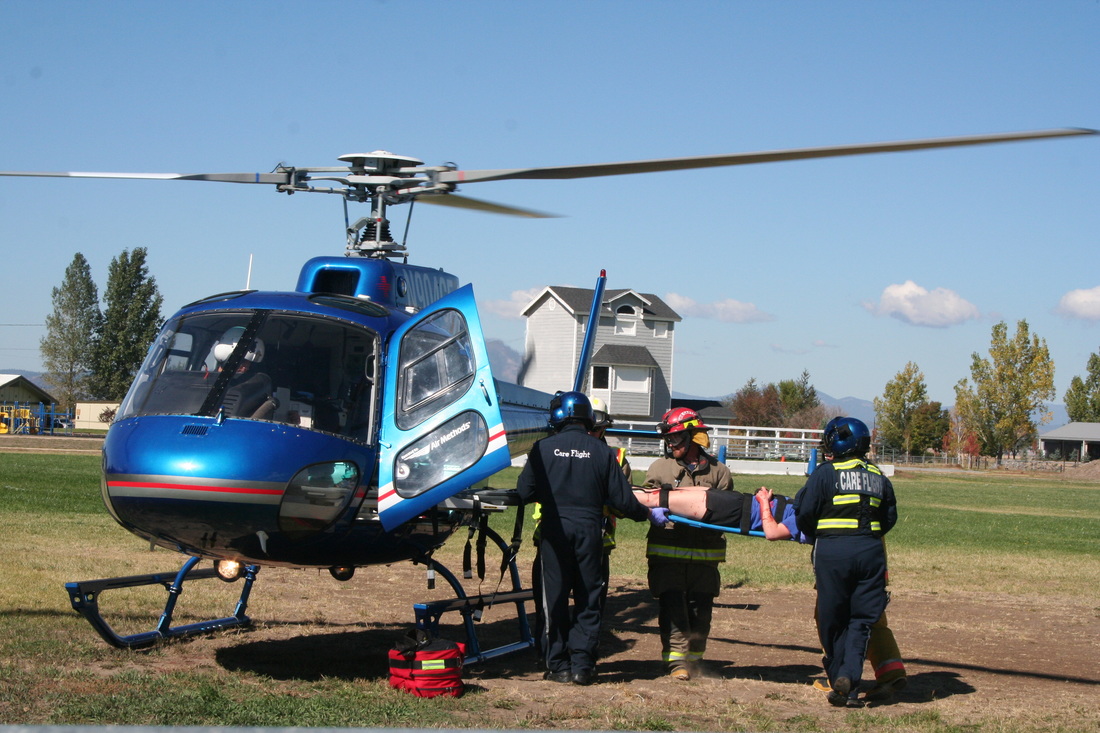 To further our commitment to serving Plumas and south Lassen counties, Care Flight is proud to announce the opening of a new base at Nervino Airport in Beckwourth, Calif. this fall. Starting in early Fall, Care Flight will begin a base of operations in Plumas County from the Nervino Airport located in Beckwourth. Care Flight is staffed with specifically trained experienced critical care flight nurses, specially trained flight paramedics and skilled pilots. Care Flight is a flying emergency room that can respond to critical patients within minutes of a request. Care Flight transports critical patients to and from hospitals and assists local communities and emergency services in continuing to meet local EMS needs. Care Flight has the same equipment and our clinicians can provide most all services and procedures found in an ICU or ER. Care Flight is a non-profit, self-supporting organization and has been caring for patients in northeastern California (including Plumas and Lassen County) and northern Nevada since 1981. Care Flight is a service of REMSA (Regional Emergency Medical Services Authority) based in Reno, Nev. Care Flight is accredited by the Commission on Accreditation of Air Medical Services (CAMTS) since 2002 and is an active member of the Association of Air Medical Services (AAMS). Care Flight values the partnership it has built with requestors over the past 35 years and is excited about building more partnerships in Plumas and Lassen Counties. Photo is during "Every 15 Minutes" held at Loyalton High School earlier this month. View as PDF CHICAGO—While those in the private sector are struggling to pay their bills and keep their jobs, federal government employees have become the aristocracy of the labor market, according to Jim Tobin, President of Taxpayers United of America (TUA). “A new study by the Cato Institute in Washington shows that federal employees earn far more than their counterparts in the private sector,” said Tobin. “According to the study authored by Chris Edwards, Director of Tax Policy Studies for the Cato Institute, federal employees’ pay and benefits were 78 percent higher than those in the private sector.” “It is ironic that these so-called ‘public servants’ are not only making rules and regulations that interfere with our private lives and hurt private industry, but that our federal taxes are funding their lavish salaries and benefits.” “Federal government employees earned an average of $84,153 in 2014, compared to the private sector’s average of $56,350. In addition, when adding benefits for federal employees, these federal employees made $119,934 in total compensation last year, while private sector workers earned $67,246, a difference of more than $52,000, or 78 percent.” “According to Edwards, rising federal compensation stems from legislated increases in general pay, increases in locality pay, expansions in benefits, and growth in the number of high-paid jobs as bureaucracies become more top-heavy.” “Edwards also points out that politics plays an important role: Federal employees are a powerful special-interest group, and are effective lobbyists. Federal unions actively oppose legislators who support restraining government employee pay.” “It’s worth noting what federal government employment actually means: generous taxpayer-subsidized benefits and pay that far outpaces the private sector, not to mention near ironclad job security. Federal employment benefits skew far from the market norms, even in a booming economy, but then again, it’s easy to make promises with other peoples’ money.” The Cato study also referred to a Washington Post analysis of lavish, gold-plated benefits received by federal government employees:
“As this most recent Cato Institute report shows, federal employees’ benefits are set artificially high by the government so that compensation far surpasses their private sector counterparts,” reiterated Tobin. “Taxpayers are constantly harangued by bureaucrats to hand over more of their hard-earned dollars to fund a never ending list of government expenditures. This study points to one area where spending cuts can be made to bring federal employees’ compensation into line with the market average, and give taxpayers a break,” Tobin concluded. Christopher Hart (38) Nevada City. Confining a dog in a vehicle. Fine $465. Damin Neundorfer (21) Nevada City. Possession of nitrous oxide with the intent to inhale. Admitted to drug diversion. Richard Osborn (82) Truckee. Abandoning an animal (a cat) in Sierra County. Fine $381. Jennifer Cox (31) Loyalton. Illegal fireworks. Fine $450. James West (50) Calpine. Driving with a blood alcohol of .08 or above. Three years probation, two days jail, fine $2427. Gene Murphy (55) Reno. Driving with a blood alcohol of .08 or above. Three years probation, two days jail, fine $2427. Thomas Dopratt (28) Camptonville. Driving under the influence with a prior conviction for driving under the influence. Five years probation, 10 days jail, fine $2622. Robert Moberly (59) Sacramento. Sentencing on a felon in possession of a firearm. Four years probation, 180 days jail, and a fine of $2410. Burns reduce hazardous fuels and improve ecosystem health Quincy, CA. – October 9, 2015 - Plumas National Forest officials have started prescribed burn projects to reduce hazardous fuels and improve ecosystem health. “To the extent economically feasible, we’ve removed all merchantable materials prior to burning,” said Daniel Lovato, Acting Forest Supervisor. Planned projects include burning piled materials, low to moderate intensity understory vegetation burns on the forest floor, and moderate to high intensity broadcast burning of brush. The goals of these projects are to reduce the severity of future wildfires, provide added protection for communities in the wildland urban interface, promote more diverse and resilient ecosystems and improve habitat for wildlife. The burns will occur as local weather & fuel conditions permit, through March 2016. Local authorities are notified prior to burn days and kept informed throughout burning operations. To ensure the safety of people and property in the area, prescribed fire projects are conducted in accordance with an approved burn plan. Burn plans describe the specific conditions under which burns will be conducted including the weather, number of personnel and opportunities to minimize smoke impacts. As a result of the burns, some residents and visitors may see or smell smoke and witness glowing from the fires at night. People should not be alarmed; the fires are carefully monitored. Forest visitors are asked to avoid areas where prescribed burns are being conducted and to recognize some spur roads near the burn areas may be inaccessible during operations. Following is a list of prescribed burn projects (with acreage and locations) currently planned: Beckwourth Ranger District Freeman Underburn – 600 acres, Lake Davis area north of Portola Ingalls Underburn – 450 acres, Lake Davis area north of Portola Jackson Hand Piles – 500 acres, along Highway 89/70 between Blairsden/Graeagle and Cromberg. Freeman Stewardship Piles – 50 acres, Lake Davis area north of Portola Turner Timber Sale Piles – 50 acres, Lake Davis area north of Portola Wolf Ranch Timber Sale Piles – 50 acres, Lake Davis area north of Portola Grizz-Walker Timber Sale Piles –50 acres, near Walker Mine, north of Sloat/Cromberg. For more information contact Fuels Specialist Don Fregulia (530) 836-7176 Mount Hough Ranger District Meadow Valley Underburn – 110 ac south of Tamarack Flat, south of Meadow Valley. 165 acres north of Meadow Valley Empire Underburn—300 acres, 125ac northeast of Massack Wolf Creek Bear Grass Underburn – 10 acres, southeast of Canyon Dam along FS road 27N80 Corridor Under Burn – 100 acres around Mt Hough Ranger station and along HWY 70 American Valley Hand Piles – 75 acres, Mill Creek drainage south of east Quincy Bucks Lake Hand and Machine Piles – 10 acres, campgrounds, Haskins Valley, and Thompson Lake Chips Reforestation Piles – 375 acres of grapple piles in the Chips Fire area, south of Lake Almanor Corridor Hand Piles – 11 acres west of Mt. Hough Ranger Station Empire Hand Piles – 10 acres north of Quincy near Mt. Hough Rd. Keddie Rock Cress - 15 acres, northwest of Round Valley Reservoir Maidu Stewardship Hand Piles – 239 acres, north of Greenville along Highway 89 Twain and Virgilia Piles - 40 acres, north of Highway 70 along Kingsbury Grade Round Valley Piles - 360 acres, around Round Valley Reservoir Keddie Ridge Piles – 136 acres off North Arm Road in the Peters Creek Drainage For more information contact Fuels Specialist Nick Bunch at (530) 283-7672. Feather River Ranger District Slapjack Underburn - 200 acres, Slapjack DFPZ Units near the community of Woodleaf, and along Oregon Hill Road south of Challenge. Brush Creek Underburn – 200 acres, Brush Creek DFPZ units near the community of Berry Creek. Watdog Underburn – 25 acres, Watdog DFPZ units north of La Porte. Feather River District Piles - 390 acres · Butte County o Woodleaf/Kanaka – 89 acres, Feather Falls/Ponderosa Reservoir. · Plumas & Sierra Counties o Cemetery Restoration – 1 acre cemetery site near the town of La Porte o Ararat-Grizzly Timber Sale Piles – 1 acre landing o Stag Point Timber Sale Piles -26 landing piles above La Porte. o Little Grass Valley - 3 acres near Little Grass Valley Campground. o La Porte Pines – 10 acres, near the community of La Porte · Yuba County o La Porte Hazardous Fuels Reduction Piles - 5 acres near Scales area. o Scales Deck Timber Sale Piles - 1 acres near Slate Creek and County Road 2. o Slapjack Hand Piles – 30 acres near Woodleaf, and Marysville Road. o Slapjack Dozer Piles - 61 acres near Woodleaf, Challenge and Bullards Bar Reservoir. o Oregon Peak Hand Piles - 16 acres near Oregon Peak Lookout. And Oregon Hill Road o Pendola Fire Restoration Hand Piles – 129 acres along Oregon Hill road near the town of Challenge. o Slapjack Timber Sale Piles – 17 biomass piles near Challenge o Oregon Hill Woodlot – 3 acres south of Challenge · For more information contact Fuels Specialist Jason Vermillion at (530) 532-7434 GOLDEN WEST DINING in downtown Loyalton is looking for a line/cook. Call 993-4467 for information!
About ten thousand dollars was raised for the Sierra Schools Foundation at the 5th Annual Swinging for the Schools Golf Tournament Saturday at Plumas Pines Golf Resort near Graeagle. SSF president Megan Meschery said, “It was a gorgeous day, with the rain breaking through only in the early evening after dinner.” She said that participants and organizers alike reported that everyone had a great time for a great cause. Winners in the various levels of competition were as follows: 1st Place Men: Jaquez foursome, and 1st Place Women's: Grandi foursome 2nd Place Men: Grant foursome, and 2nd Place Women's: Brady foursome 3rd Place Men: Donnelly foursome, and 3rd Place Women's: Olivieri foursome Closest to the Pin Men: Taylor Mieras Closest to the Pin Women: Kasey Marin Longest Drive Men: Taylor Mieras Longest Drive Women: Dawna Mantei For this year’s Fashionista Award the Grandi foursome took first place with its handmade tutus and blue ribbons to promote the fight against colon cancer. The Walker foursome was a close second with its Hawaiian theme complete with a sharkmobile and a marlin moto. The special Alumni Award went to the Travis Cone foursome with every player a graduate from Loyalton High School: Travis Cone, Jeff Brooks, Aaron Adams and Paul Salas. Duncan Cameron's alumni team also had a great showing and gave the Cone foursome a run for its money. Meschery said that “The Sierra Schools Foundation greatly appreciates Duncan Cameron, welder extraordinaire, for creating and donating all of the beautiful medals this year. Many thanks also go to Sheri and Paul Roen for cooking up a wonderful post-golf meal. We really appreciate the community effort to make this big day happen.” PGA Professional Robert Garrigus and his wife Ami, who is a 1997 graduate of Loyalton High School, again sponsored the tournament with generous gifts of TaylorMade clubs and equipment valued in thousands of dollars. Other major sponsors were West Orthodontics of Truckee and Plumas Pines Golf Resort. Tee sponsors this year included the following: Alfred Surveying, Loyalton Bracher Construction, Loyalton Tim Driscoll Construction, Calpine Dryden Plumbing, Loyalton Robert Fisher, Encinitas Friday Night Live Kids, Loyalton Mario Garibotti, D.D.S., Portola Graeagle Mill Works, Graeagle Richard Griffin Construction, Loyalton The Law Offices of Tom Archer, Truckee Loyalton Rotary Club McCormack Construction, Sierraville Janet and Craig McHenry of Loyalton Pezzullo & Gusset, CPA/LLP, Susanville Roberti Ranch, Loyalton Rotary Club of Loyalton Sierra County Deputy Association Sierra Professional Associates, Portola Sierra Valley Feed Store, Sierraville Sierra Valley Home Center, Sierraville Sierra Valley Lodge, Calpine Tahoe Truckee Sierra Disposal, Tahoe City Truckee River Associates, Truckee In addition to the TaylorMade equipment and gear donated by the Garrigus family, the following businesses and individuals donated various prizes and gift certificates for awards, auction items and raffles: Athletics Unlimited, Reno Atlantis Casino Resort, Reno Vicki Barney Desserts Travis Cone Catering, Loyalton Downieville Day Spa, Downieville Downieville Outfitters, Downieville Eco Centric, Graeagle Fork ‘n’ Horn Restaurant, Sierraville 49 Wines, Downieville Golden West Restaurant, Loyalton Graeagle Mill Works, Graeagle Graeagle Land & Cattle Co, Graeagle Hair Faire and Debbie Jaquez, Loyalton Lis Henson, Independent Thirty-One Gifts, Loyalton Hidden Valley Country Club, Reno Indian Peak Vineyards, Graeagle Tyson Jaquez, Reno La Cocina de Oro, Downieville Longboards Bar & Grill, Graeagle Los Dos Hermanos Restaurant, Sierraville Loyalton High School Construction Class Janet McHenry, Loyalton, Looking Up! The Mountain Messenger, Downieville PJ’s Restaurant, Reno Plumas Pines Golf Resort, Graeagle Red Pony, Sierraville Reno Provisions Market, Reno RVCA, Costa Mea St. Charles Place, Downieville Salon Glow, Reno Sierra County Arts Council, Katie O’Hara Kelly, B.J. Jordan Doug and Allison Smith, Oakland Smithneck Farms Café, Sierraville Stuff ‘n’ Things and Joe Flannery, Loyalton Sugar Bowl Corporation, Norden Sunnyside Resort Tahoe Two Rivers Gallery, Downieville Allen Wright, Downieville Yuba Expeditions Meschery said that the Sierra Schools Foundation appreciates all of the sponsors and prize donors for their “generosity and show of support for excellence in education. They are having a direct and lasting impact on students and the schools.” MORE INFO: Janet McHenry, [email protected]; Megan Meschery, [email protected] 'They need a Cost-of-Living Adjustment' WASHINGTON, DC, Oct 2 - "Fixed income seniors suffer while the Obama administration offers unemployment payments for up to six full months even though it is a clear cut disincentive for job seekers. The administration, it seems, is unwilling to give the jobless the motivation they need to start seeking jobs by cutting back on the government's unemployment largesse. Yet, hapless retirees and other fixed income Americans may be denied a paltry 1% COLA increase yet again," according to Dan Weber, president of the Association of Mature American Citizens. "Unemployment benefits, indeed, constitute a safety net for those who are temporarily out of work. But a policy of providing automatic payouts that last as long as six months is nothing short of a disincentive for job seekers in an economic climate where part-time work is fast becoming the norm." When the states of North and South Carolina and Georgia reduced the length of time individuals could receive unemployment payments an amazing thing happened, Weber said. Those states limited unemployment payments to as little a period as 12 weeks and quickly saw unemployment rates drop to new lows. "So, when the incentive not to work is replaced by an incentive to work people found jobs within a matter of three months. It's about time we started to focus on policies that work. We need to stop bankrolling subjectively generous policies that sap the natural urge of American workers to find jobs. They are part and parcel of failed economic schemes that have also had a negative impact on the nation's productivity, Gross Domestic Product, job creation efforts and taxpayer revenue." If President Obama would adopt a similar strategy as those established in the Carolinas and Georgia, he might actually accomplish two important things. He would give those who've dropped out of the workforce a reason to go out and look for work. He would also free up funds to help those who really need help - older Americans on fixed incomes." "Let's stop the 26-week employment disincentive and get back to common sense," Weber wrote in a recent OpEd article posted at Townhall.Com. In the article, Weber railed against the government's insistence that a longer term unemployment payment schedule for the jobless is a good policy. He noted that some 92.9 million Americans are no longer in the labor force, no longer looking for work, and that the 62.7 percent labor participation rate is acceptable notwithstanding the fact that it is at its lowest level in four decades. The OpEd article challenged the president who contends that unemployment is no longer a problem. If it is no longer a problem, Weber asserted, Mr. Obama might want to refocus his attention on that segment of the population that needs help, older Americans on fixed income. "Within weeks, President Obama will announce that national inflation is so low this year that, like 2009 and 2010, those on fixed federal incomes - including Social Security recipients - will get a zero Cost-of-Living Adjustment (COLA), under the current formula. While he could change this, the COLA for seniors is headed for zero." Weber urged the president to put a shorter time limit on unemployment benefits. "Let's use the billions of dollars saved to offset a simple, one-time, one-percent COLA for all older Americans - many of whom served in the military, paid a lifetime into the Social Security system and deserve enough benefits from those services to pay for their groceries, rents and medicine. Save the rest of the unemployment entitlement checks for a tax cut for average Americans. It is about time, isn't it?" ABOUT AMAC The Association of Mature American Citizens [http://www.amac.us] is a vibrant, vital senior advocacy organization that takes its marching orders from its members. We act and speak on their behalf, protecting their interests and offering a practical insight on how to best solve the problems they face today. Live long and make a difference by joining us today at http://amac.us/join-amac. |
CONTACT US:Sierra Booster Newspaper
PO Box 8 Loyalton, CA 96118 Phone: 530-993-4379 Fax: 844-272-8583 Email: [email protected] Website Privacy Policy |
©Copyright Sierra Booster - Sierra County News - Editorial
Website by Chamber Nation
|
